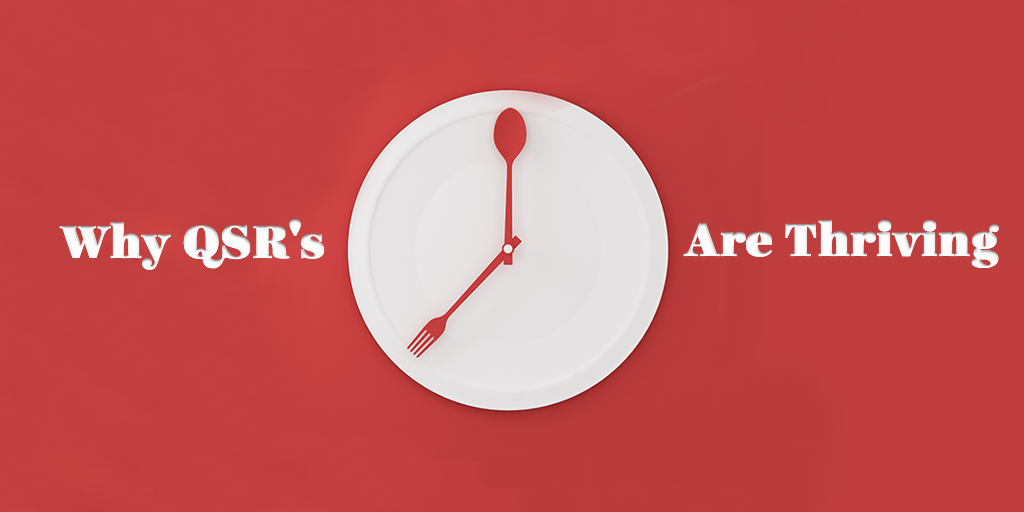As more people start to get vaccinated, many Quick Service Restaurants (QSRs) are taking steps towards a gradual reopening. With drastic changes in consumer patterns, dining behavior, and safety guidelines, there is a need for QSRs to transform their pre-Covid routines to stay relevant.
However, with an onslaught of information, data and statistics online, it may seem overwhelming to QSR owners. Some may have to make drastic changes to their stores while hiring sufficient staff to meet demands.
For simplicity, we’ve summarized some key trends and data, which will hopefully help you in gearing up your QSR for the new normal. They’ll be broken down into three main sections: Consumer Behavior, Digital Transformation, and Recruitment.
Consumer Behavior
How exactly has consumer behavior changed, and what do your customers expect from your QSR when it reopens? It is important to understand their perspective, to retain customers, and draw in new ones. Expectations have shifted as people are increasingly aware of health risks, and many hope that QSRs have put in sufficient measures in place to reduce the spread of the virus.
Expectations of a Restaurant
- Types of PPE worn
-
- Both masks and gloves: 61.9%
- Only Masks: 24%
- Only Gloves: 14.1%

- How long should staff wear PPE (After reopening)
- Minimally 30 days: 39.1%
- 60 days: 20.8%
Most customers expect QSRs to adhere to health regulations and enforce the donning of PPE for staff. The majority of respondents believe that both masks and gloves are crucial and that PPE should be worn for minimally 30 days after the QSR has reopened. Keeping this in mind, prepare your QSR by ensuring that all staff members are equipped with PPE, to keep both staff and customers safe, and grant both parties peace of mind.
Restaurant Traffic
- Significant fall in on-premise diners contributing to sales
- Before: 80%
- March 2020: 70%
- Now: 43%

- Firehouse Subs Case Study (% of people dining in)
- 2014: Below 50%
- 2016: 46.5%
- 2019: 38%
- Preference for dining in (How often do they plan to dine in)
- Same as before: 50.9%
- Less than before: 45.9%
There is a significant fall in preference for on-premise dining, as more customers are wary about potential health risks. Fast-casual restaurants saw a 5 percentage point decline in dine-in, up to a high of 17 percentage point drop for some quick-service brands. It is inevitable that on-premise dining is not the go-to option for customers, and QSRs will have to pivot their business.
Traditional Channel of Trade
- Firehouse Subs Case Study (% sales generated by customers at the cashier)
- 2012: 89.5%
-
- 2019: 75.3%
- Omni-channel opportunities
- Omni customers spend $122 per order, vs in-store of $47 per customer
- 160% increase in sales through omnichannel

More people are not just making payment at the counter, with the rise of mobile payment and other means of getting food. QSRs will have to embrace omnichannel marketing, with the rise of online ordering, third-party delivery, drive-thrus, and mobile ordering. A greater preference for different channels means that QSRs can uncover the potential of greater spending by creating a seamless omnichannel experience for their customers.
Lines and Wait Times
- 85% of consumers will consider or outright leave a perceived long line
- 50% will delete apps if they have long wait times on-premise

The good news is that omnichannel marketing also accounts for this, effectively reducing wait times and lines, if customers are allowed to make their orders online and pick them up when the food is ready. Shorter wait times also mean happier customers!
One example is allowing a customer to purchase through a mobile application, alerting them when the food is ready for collection, and rewarding them with points after they’ve picked up their food.
Digital Transformation
Panasonic conducted a survey that included 150 Food Services and Food Retail decision-makers in the U.S. and Canada - where 100% of respondents stated that Covid-19 has increased their urgency to adopt transformational technologies. Additionally, 78% indicated that contactless payments are much greater in demand - with the rise of (1) curbside pickup, (2) drive-thrus, and (3) mobile purchases.
Let’s take a look at these areas in more detail, based on surveys conducted by Bluedot.IO and VIPInsiders.
Curbside Pickup
- Usage (Bluedot.IO)
- 60% have used it in the past month (May 2021)
- Fall in frequency, compared to 80% (Feb 2021)
- Preferences - How likely are customers to use it? (VIPInsiders)
- Somewhat likely (34.4%)
- Very likely (31.9%)
- Extremely likely (18.2%)

It is evident that despite the fall in usage of curbside pickup, curbside delivery is still an essential offering that customers are likely to rely on. This is especially crucial in times where on-premise dining is regulated or disallowed, making it a good backup plan where businesses will not be impacted even with regulations in place.
Drive-Thrus
- 51% of respondents are more likely to visit a QSR if they have a drive-thru
- 34% more likely to add more menu items at a drive-thru

Drive-thrus are a popular option, as it increases the chances of customers choosing to visit your QSR. As an added bonus, it might even increase sales as 34% are more likely to add menu items when visiting a drive-thru. Many QSR giants, such as McDonald’s and Chipotle, have also been exploring automation, innovation and are adding more drive-thrus in a bid to improve the attractiveness and meet demands.
Mobile Purchases
- Nearly 60% of all online searches are now carried out on a mobile device, with some sectors (QSRs) reaching 72%.
- 40% will download the app to order via one-click
- Build an app for fast and easy use, entice with deals and coupons, earn and track, easy payment, bypass long line
- 68% order directly from restaurant apps multiple times a month
- 75% of customers want offers to be sent to them via text message
More customers want to make orders quickly, and on the go, and the fastest way to do so is through a mobile application. With most online searches conducted on a mobile device, mobile applications are the fastest way to a consumer’s heart (and wallet).
With a majority of customers ordering directly from restaurant applications multiple times a month, it is a great opportunity to engage your customers, collect information on their preferences and provide loyalty points. This effectively ties in with how to market offers to customers, as 35% of customers prefer loyalty and rewards programs, followed closely by 27.1% for text message marketing and 23.2% who choose social media.
Furthermore, mobile applications will also reduce waiting times, as customers can make orders on the go, drop by to collect the food when it’s done without having to factor in food preparation and queueing. This is especially important since many have limited time in between meetings or commute, and every second matter.
Recruiting
Finally, how exactly should you hire a sufficiently large army of staff to meet the demands when your QSR reopens? Apart from creative job postings, here are some hiring trends you should know, because these will help in attracting new workers, or ensuring that you can retain your current employees.
What hourly workers want
- 53% were hesitant or declined to apply to new jobs due to fear of exposure
- 70% want the ability to communicate and schedule shifts via a mobile device
- 94% said accessing their pay before payday would be helpful

Fear and Exposure
To alleviate their concerns, show your staff (and potential candidates) that your QSR is doing its part in enforcing safety standards across the boards. Adequate PPE for staff, frequent cleaning, and disinfecting, and safety distancing measures can be implemented in your restaurant.
Additionally, you may even go the extra mile to take precautions during the hiring process. Virtual interviews can be conducted through video conferences, such that candidates will only have to attend a face-to-face interview in the final stages. This reduces unnecessary exposure and contact.
Mobile scheduling and communication
Consider mobile training, which ensures that new candidates can access training videos and other materials anytime through their smartphones. These materials can be sent to both new hires and existing employees, and hiring managers will also be able to instantly review completion rates, and send SMS reminders to guarantee completion.
Accessing pay before payday
Explore applications such as Branch, that will allow workers to access wages instantly, instead of having to wait for their paycheck every month. Some QSRs such as Dominos, Taco Bell, and Dunkin', have established partnerships that allow employees to have faster access to their earnings, at up to 50% of their paycheck. This reduces instances of them borrowing from high-interest creditors to make payments, lowering finance-induced emotional stress on the workers, and will also help them in managing their cash flow.
In summary, it is crucial to understand these data and trends, before applying them in the context of your QSR to better prepare for reopening in these times. With rapidly changing customer behaviors, it is important to understand what customers and employees want from your QSR to be able to meet their needs and successfully gain their trust. This is then enhanced through the adoption of digital transformation.
If you’d like more customized tips on how you can incorporate digitalization or streamline the hiring processes for your QSR, schedule a chat with us!





